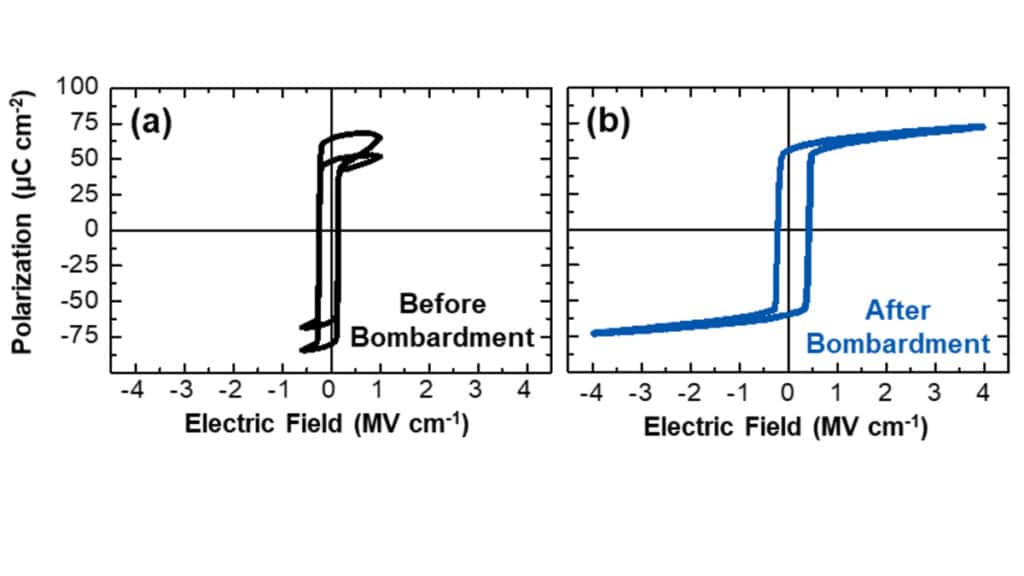Researchers at Berkeley University of California reached energy storage densities as high as ~133 joules per cubic centimeter with efficiencies exceeding 75% by high-energy ion bombardment of relaxor ferroelectric thin films.
Defect-enhanced energy storage
Dielectric capacitors are vital components of electronics and power systems. The thin-film materials of which capacitors are composed are usually optimized by changing the material composition. However, Kim et al. found that postprocessing an already effective thin-film dielectric by high-energy ion bombardment further improved the material because of the introduction of specific types of defects that ultimately improved the energy storage performance. The results suggest that postprocessing may be important for developing the next generation of capacitors.
Abstract
Dielectric capacitors can store and release electric energy at ultrafast rates and are extensively studied for applications in electronics and electric power systems. Among various candidates, thin films based on relaxor ferroelectrics, a special kind of ferroelectric with nanometer-sized domains, have attracted special attention because of their high energy densities and efficiencies.
We show that high-energy ion bombardment improves the energy storage performance of relaxor ferroelectric thin films. Intrinsic point defects created by ion bombardment reduce leakage, delay low-field polarization saturation, enhance high-field polarizability, and improve breakdown strength. We demonstrate energy storage densities as high as ~133 joules per cubic centimeter with efficiencies exceeding 75%. Deterministic control of defects by means of postsynthesis processing methods such as ion bombardment can be used to overcome the trade-off between high polarizability and breakdown strength.
Science 03 Jul 2020:
Vol. 369, Issue 6499, pp. 81-84
DOI: 10.1126/science.abb0631
